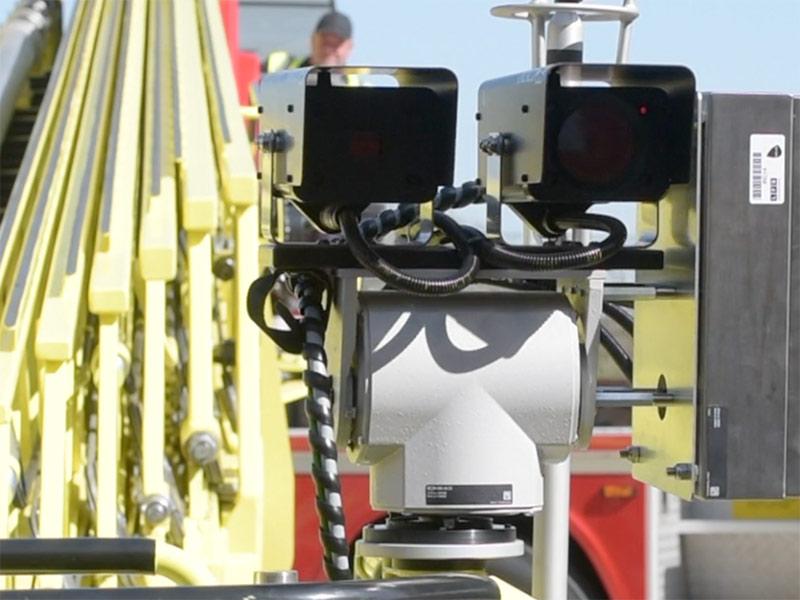There are three operational 64m Turntable Ladders (TLs) in our fleet, which are located in Dagenham, Old Kent Road and Wimbledon, providing cover across all of London.
The new 64 TLs in action.
The 64m TLs will be used at incidents when a crew needs to get water up to height, when a high observation platform will provide valuable insight into how the incident is developing, and where rescue is required from height.
Our 64m TLs are Magirus vehicles built at Emergency One in Glasgow.
The main purpose of the 64m TL is to provide water from height at incidents. The ladder has its own internal pump and will be accompanied by a fire engine to ensure that there’ll be an immediate water supply ready to tackle fires.
The 64m TLs are twice the height of our next tallest appliance, so can reach heights of up to approximately 20 floors. They feature an onboard lift that can be used for mass casualty rescue if conditions are suitable.
Cameras positioned at the top of the 64m TLs give incident commanders an aerial view of an incident which helps their situational awareness and ability to develop tactics. Officers will also be able to view live-streaming images from the 64-metre cage, and thermal-imaging technology provides even more insight.

The rear wheel steering feature of the new 64m TLs means that although they’re physically bigger than our 32m TLs, they’re still highly manoeuvrable and are remarkably easy to steer through London’s narrow streets.
Flexibility has been built into the design of the 64m TL. This means that the ladder may curve in the wind, but that the movement is dampened. In-built sensors alert the crew if weather conditions mean the ladders can’t be used safely at its extended height.

All operators need be trained in how to use the 32m TLs and are then required to complete a five-day 64m TL operator course. This course covers all aspects of the operation of the 64m TL including the use of the rescue lift and the onboard pump. Operators will learn about the inbuilt safety systems and failsafe mechanism giving them the confidence that this new capability is as safe and effective as it can be.
A three-day driving course is also required which involves a dedicated day for learning manoeuvring skills.
Aerial support pump crews need to complete a one-day course.